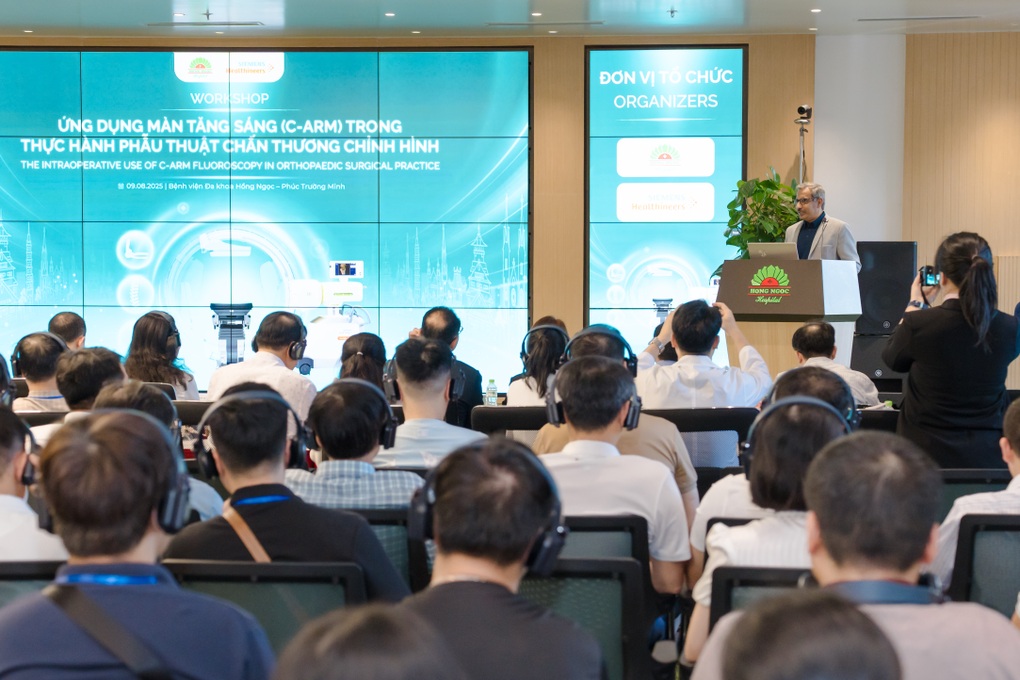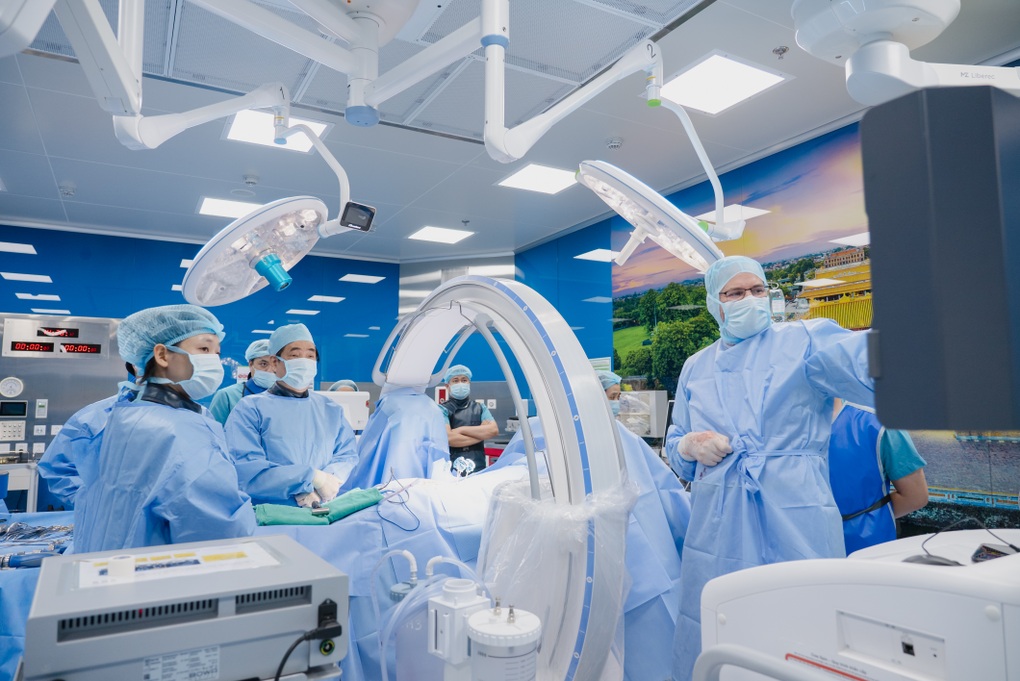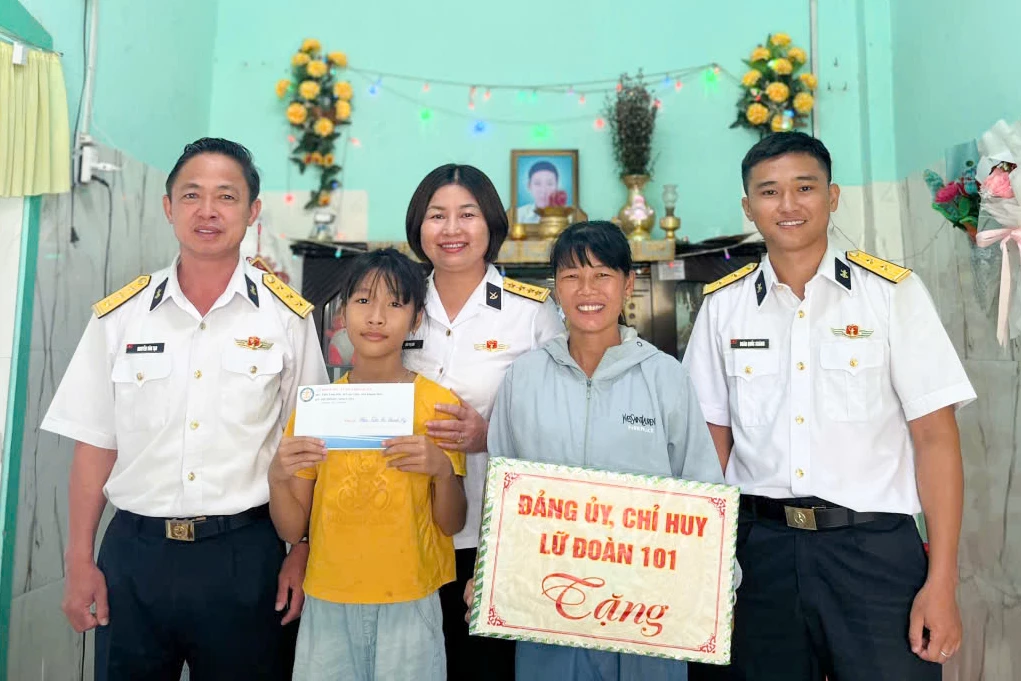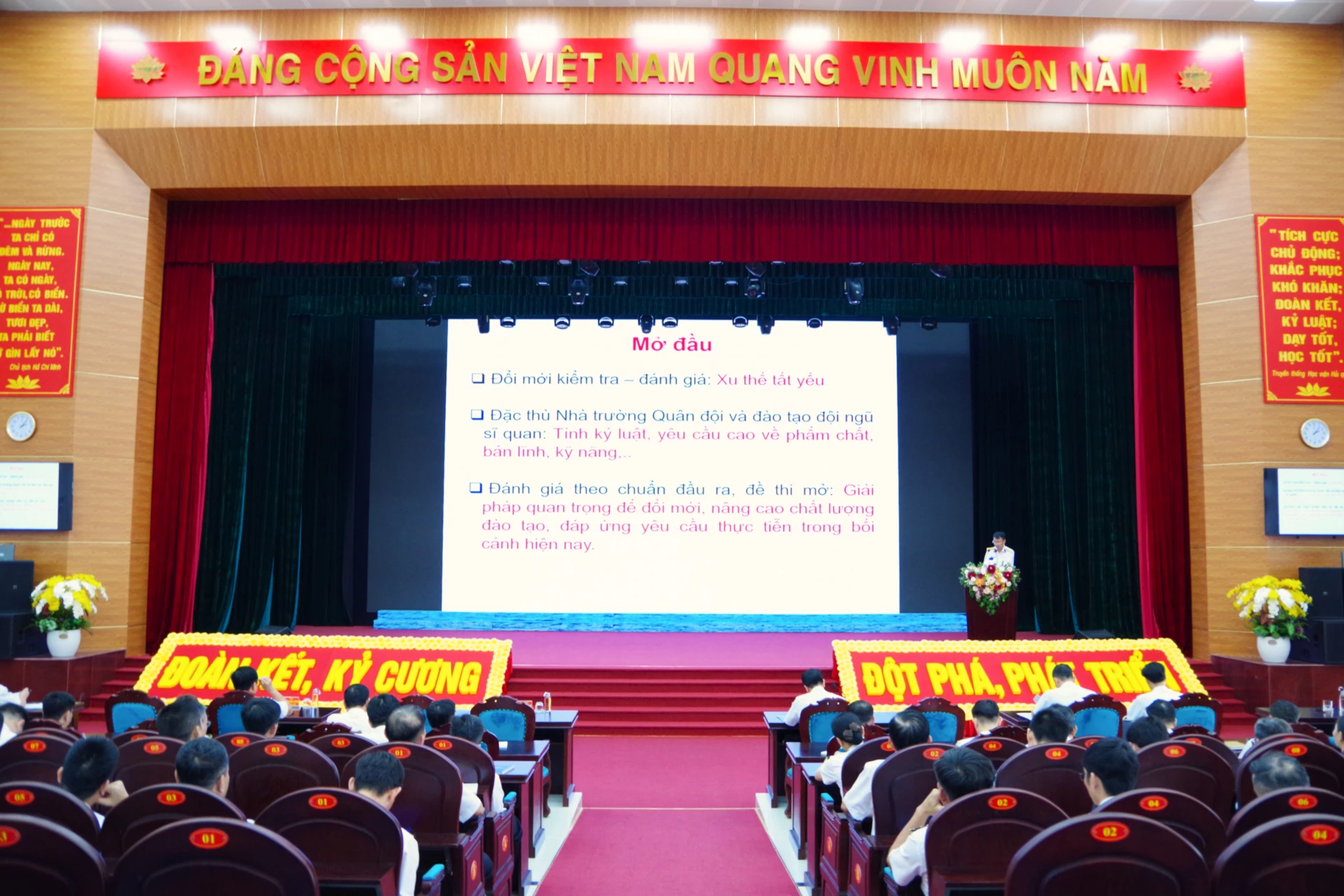Percutaneous spinal screw fixation, avoiding nerve damage thanks to 3D C-arm technology
On August 9, the workshop “Application of light-increasing screen (C-arm) in orthopedic trauma surgery” was held at Hong Ngoc - Phuc Truong Minh General Hospital, gathering leading experts and doctors. The experts updated many new advances through 7 professional reports, providing a multi-dimensional perspective on the application of C-arm technology in orthopedic trauma surgery.
Within the framework of the event, Hong Ngoc General Hospital coordinated with international professional consultants to perform percutaneous spinal screw surgery, and simultaneously broadcast live at the workshop to introduce the operating process and application of 3D C-arm integrated with AI.

The workshop received attention from experts and doctors (Photo: BVCC).
The case reported live from the operating room is of patient Kim Oanh (63 years old, Hanoi ), who has suffered for many years from chronic pain and numbness in her legs due to spinal degeneration, leading to lumbar spinal stenosis and nerve root compression at the L4/L5 position.
Associate Professor, Dr. Ha Kim Trung - Deputy Director of Hong Ngoc - Phuc Truong Minh General Hospital directly examined and said that spinal stenosis is a common complication of spinal degeneration that compresses nerve roots, causing pain, numbness, and reduced mobility. If not intervened promptly, spinal stenosis compressing nerve roots can cause movement disorders, chronic pain, limb weakness, and muscle atrophy.
In this case, the optimal method is surgery to release compression, remove the disc, and screw the spinal pedicle through the skin under the guidance of the new generation 3D C-arm system integrated with AI to help fix and stabilize the spine.

The surgical team analyzed the C-arm film before surgery (Photo: BVCC).
Associate Professor Ha Kim Trung conducted an interdisciplinary consultation and planned percutaneous screw surgery with the support of professional advisor Professor, Doctor, Doctor Dietmar Krappinger, Deputy Director of the Center for Orthopedic Trauma, Innsbruck Medical University (Austria).

3D C-arm technology integrated with AI provides images in just 30 seconds/shot for sharp 3D images (Photo: BVCC).
“3D C-arm technology integrated with AI provides sharp 3D images in multidimensional space, helping surgeons clearly observe anatomical structures. At the same time, it supports tracking and navigating instruments to help place fixation screws into the L4/L5 vertebrae accurately, reducing invasion and avoiding nerve root damage. After recovery, patients are not limited in movement, can rotate, bend, and bend their back easily,” Associate Professor Ha Kim Trung emphasized.
After 2 hours, the surgery was successful. The screws were placed in the correct position, the spine was firmly fixed, the patient was awake immediately after surgery, had normal limb movement and no signs of nerve damage were recorded.
New generation 3D C-arm technology, improving accuracy in spinal surgery
Hong Ngoc General Hospital is one of the pioneering medical facilities applying new generation 3D C-arm technology to spinal surgery with many outstanding benefits, helping doctors perform surgical operations accurately and optimize treatment effectiveness for patients.

3D image of precise screw placement into L4/L5 vertebrae (Photo: BVCC).
Accordingly, 3D C-arm technology integrated with AI is capable of providing sharp multidimensional images, helping doctors clearly observe the location of the lesion and surrounding structures, accurately locating the direction and entry point of the screw, avoiding damage to nerve roots and other important structures in the spine.
NaviLink software automatically synchronizes 3D images with surgical navigation systems after just one operation, increasing accuracy and reducing operation time. The new generation 3D C-arm machine also has the ability to quickly capture 3D images, taking only 30 seconds for a scan, helping doctors observe more clearly and in detail during each surgical operation.
In addition, the smart design of the 3D C-arm also minimizes contact between the machine parts and the patient, helping to reduce the risk of infection during surgery. The system automatically optimizes the X-ray dose, minimizing ionizing radiation, ensuring safety for both the patient and the surgical team.

Percutaneous spinal screw surgery using the new generation 3D C-arm machine (Photo: BVCC).
To effectively deploy this technology, Hong Ngoc General Hospital has invested in a synchronous system of facilities, including operating rooms that meet international standards, covered with 2mm thick lead, ensuring safety from radiation during surgery.
At the same time, the operating room is designed with antibacterial walls and ceilings, combined with a British standard air conditioning and filtration system, helping to minimize the risk of infection. Specialized operating tables are used for orthopedic surgery, with anti-ray capabilities, helping to improve the quality of 3D images during surgery.
The online surgery using the new generation of 3D C-arm technology at Hong Ngoc - Phuc Truong Minh General Hospital not only brings practical experience to the team of doctors specializing in orthopedics and trauma, but also demonstrates the hospital's orientation in approaching and applying advances in modern medicine.
Source: https://dantri.com.vn/suc-khoe/phau-thuat-thoai-hoa-cot-song-hoi-phuc-nhanh-tranh-bien-chung-nho-cong-nghe-c-arm-3d-20250812224119622.htm





























![[Photo] An Phu intersection project connecting Ho Chi Minh City-Long Thanh-Dau Giay expressway behind schedule](https://vstatic.vietnam.vn/vietnam/resource/IMAGE/2025/8/21/1ad80e9dd8944150bb72e6c49ecc7e08)






























![[Photo] Politburo works with the Standing Committee of Hanoi Party Committee and Ho Chi Minh City Party Committee](https://vstatic.vietnam.vn/vietnam/resource/IMAGE/2025/8/21/4f3460337a6045e7847d50d38704355d)

































Comment (0)